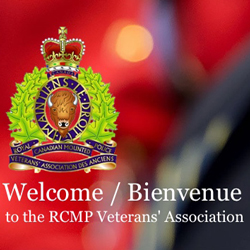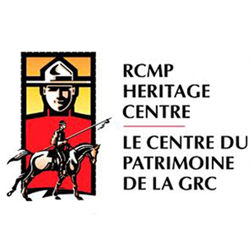Larry Burden – This Day In The RCMP

The achievements and contributions of the Force have been built upon the individual contributions of many past Veterans. These contributions have largely been forgotten.
Veteran Sgt. Larry Burden ( #35982) served in “E” Division for 20 years has spent over ten years researching and summarizing these achievements by specific date. Nearly every day, Larry sends out an email message with a selection from his work in progress manuscript “This Day In The RCMP” to individuals interested in these historical notes.
In an effort to share his research to a large group, Larry has agreed to permit us to develop a webpage on our website. Each webpage will post Larry’s historical notations over the past week.
If you wish to contact Larry Burden or provide additional information about his research, please email him at larryburden8@gmail.com.
September 5
1945 – Canada is thrust into the international limelight when Soviet cipher clerk Igor Gouzenko (1919-1982) defects from the USSR Embassy taking with him more than 100 secret documents hidden under his coat. The documents detail the inner workings of a major Soviet spy ring in Canada that reach into the Department of External Affairs code room, the British High Commissioner’s Office and the Chalk River nuclear facility. After the RCMP concludes their investigation 20 espionage trials are held resulting in nine criminal convictions, including a Member of Parliament. Gouzenko is given a new identity and lives out the rest of his life in Canada and dies in 1982.

1986 – Canada Post Corporation unveils a new 34-cent stamp commemorating Assistant Commissioner James Farquharson Macleod at a satellite ceremony in the foyer of RCMP Headquarters in Ottawa. The official launching ceremony occurred at Fort MacLeod Alberta where the stamps honouring MacLeod and Chief Crowfoot were unveiled. Present for the unveiling ceremony in Ottawa were the Honorable Jude Rene’ J. Marin, Deputy Commisioner J.F. J. Bosse’ and Sergeant Carl Stoski and Corporal Pierre Belanger.
1991 – After a drunken, agitated man went on a shooting rampage in Igloolik, NWT (now Nunavut) #32100 Corporal Dean E. Taylor confronted the man and ordered him to put down his .303 caliber rifle. Eventually the gunman calmed down and surrendered his weapon and was arrested. In recognition of his courage and presence of mind Corporal Taylor was awarded the Commissioners Commendation.
September 6
1897 – The Saskatchewan Roughrider Football Club is formed in Regina Saskatchewan, becoming the first of two teams to be named the Roughriders! Over the next century many recruits get to see their first professional football game while taking a much-appreciated break from basic training in Regina.

Photograph of Francis Boucher (Reg.#7684) as a member of the New York Rangers hockey team.
1921 – #7684 Constable Francis Boucher hung up his spurs and put on a pair of hockey skates, when he purchased his discharge from the RCMP to play for the New York Rangers in the National Hockey League.
1945 – The Member of Parliament for Montreal-Cartier and leader of the Canadian Communist Party, Fred Rose (1907-1983), was arrested for communicating official secrets to the USSR. After a sensational trial involving the Soviet cipher clerk Igor Gouzenko who defected and testified about Soviet espionage tactics in Canada, Rose is convicted and sentenced to 6 years in prison and then deported to Poland.
1977 – The Metric System arrives in Canada becomes the official system of measurement. All Canadian provinces convert their highway signs except Quebec and Nova Scotia who stay with miles instead of kilometers. Eventually they give in and join the rest of the country.
1995 – Honour Roll Number 191.

Photograph of Constable Joseph Ernest Andre Claude Gagne (Reg.#44134) (Source of photo – 1996 edition of the RCMP Quarterly magazine).
#44134 Constable Joseph Ernest André Claude Gagné age 30 was killed on duty in a police car accident on Highway 217 near Seabrook, Nova Scotia.
After a report of a serious car crash was received at the Digby Detachment Cst. Gagné got into a police car driven by Cst. Russell Manderville and they proceeded to the scene at a high rate of speed. As they approached the area known as Seabrook, and elderly driver pulled out in front of them. To avoid a collision Cst. Manderville moved into the opposite lane to pass the car, unfortunately the elderly driver who despite the siren and flashing lights was unaware of the overtaking police car, veered his vehicle to the left because he and seen a cyclist riding on the shoulder of the road.
That resulted in the police vehicle being forced toward the opposite ditch causing the police vehicles left wheels to drop off of the pavement. When #44684 Cst. Manderville attempted to steer his car back onto the pavement, the edge of his left front tire caught the edge of the asphalt, tearing it from the rim. The car then began fishtailing and while he attempted to bring his vehicle under control the damaged wheel dug into the pavement and sent it into the ditch where it rolled over several times and flattened the roof of the car, crushing both occupants. Cst. Gagné did not survive his injuries. Cst. Manderville suffered multiple injuries to his head, ribs, kidneys, and spleen and was later transferred to hospital and eventually recovered.
Claude Gagné was originally from Quebec City and joined the RCMP only three years earlier and served all of his field service at Digby Detachment. A memorial service was held the day after his untimely death at a funeral home in Digby and then his remains were transported to Quebec City. His funeral mass was attended by a massive crowd of family friends and RCMP Police personnel. Afterwards his remains were interred in a crypt at the St. Charles Cemetery near Sainte-Odile parish.
September 7
1890 – #02022 Constable James Vaughan died of Mountain Fever (likely Typhoid) at Pincer Creek Alberta. He is buried in Plot 32 at the Union Cemetery, Fort MacLeod, Alberta.
1969 – Mr. Justice W.G. Morrow of the Northwest Territories publicly acknowledged the courage and restraint exhibited by Corporal J.J. Hodgson and Constable D.R. Hadley on this day in 1969 when they attended a gun complaint in Inuvik. The policemen were advised that a drunken Indian was firing a rifle and threatening people. When they arrived on scene they saw the gunman struggle with a bystander for possession of the .300 Savage hunting rifle. Taking cover behind their vehicles Corporal Hodgson yelled “Don’t do it” and the gunman wielded around ratcheting the lever action and visibly agitated began yelling at the police. After some calm words the police officers the gunman surrendered his weapon and was taken into custody.
1977 – At 4:22 am #32634 Constable Robert J. Mollet was patrolling near the Shell Oil, bulk storage plant in Nanaimo, BC when he observed a large fire burning in the plant. Recognizing the danger, Constable Mollet radioed in the fire as he rushed to an adjacent apartment building and woke the building manager and got him to evacuate the building. As he rushed back towards the scene of the fire he met BC Ferries employee Steven Wilson who saw the flames as he was bicycling to work and rushed to the scene. As the two men approached the fire they observed a man engulfed in flames running from the area of the fuel tanks. Mollet then kicked out some boards on the fence that surrounded the area and the two men rushed in and tackled the man and sing their jackets smothered the flames on his body. Their efforts were not enough to save the man who later died from the burns he received to 80% of his body. Investigators later discovered that the man had a pried lock stuffed inside his clothing and found that the man had been suffering from mental illness and was psychotic.
The Coroners inquest found Mr. Tychonick had set the fire to the four and a half million-dollar fire and that he was responsible for the death of one of the firemen who was killed fighting the blaze.
In recognition of their bravery and heroism in rescuing the deranged man and the occupants of the apartment building the City of Nanaimo presented both men the Nanaimo Merit Award.
1991 – The Alberta Court of Appeal strikes down the second conviction of James Keegstra, for willfully promoting hatred against Jews.
September 8
1890 – Honour Roll Numbers 15 and 16.

Photograph of the RCMP Cenotaph at “Depot” Division with the highlighted names of Constable George Quiqueran Rene Saves DeBeaujeu (Reg.#2439) and Corporal Harry Oliver Morphy (Reg.#2162) (Source of photo – Sheldon Boles).
#02439 Constable George Quiqueran Rene Saveuse DeBeaujeu age 18 and #02162 Corporal Harry Oliver Morphy age 30 were killed when the Mounted Police vessel “Keewatin” capsized on Lake Winnipeg during a storm.
In 1890 the NWMP purchased the Steam Ship Keewatin for use in trying to control illegal liquor movement on the 300 mile long Lake Winnipeg. The two policemen were assigned to the vessel and made patrols throughout the summer. When the vessel failed to return from a patrol after a heavy storm, word of the ship’s fate filtered in from local natives reporting that the boat had been wrecked on the eastern shore of the lake. Eventually searchers located wreckage half way up the lake hull at Rabbit Point with the unconscious civilian Ship’s Captain; Matthew Watts lashed to the Keewatin’s hull.
When the Captain was taken to hospital in Selkirk Manitoba he was interviewed by Commissioner L.W. Herchmer. From him they learned that the ship had left Spider Island on the morning of September 7 in strong winds. Later that afternoon they had anchored off of Swampy Island to ride out the storm, but around 7:30 pm, the boat’s anchor chain broke and the ship was cast adrift. Unable to re-anchor the ship, they tried to ride out the storm while Constable DeBeaujeu and Corporal Morphy spent the night bailing water in an attempt to prevent the ship from being swamped. At day break the following morning the ship lost its centerboard when it struck a submerged reef and then capsized.
The three men clung desperately to the hull but late in the day Constable DeBeaujeu, overcome by exhaustion and hypothermia slipped off the hull and drowned. Corporal Morphy succumbed to the same fate the following morning. Captain Watts managed to lash himself to the hull and slipped in and out of consciousness until he was rescued 13 days after the disaster. Sadly Watts died a few days after the Commissioner interviewed him.
An extensive search was conducted as soon as the wreck was located, but neither body was found. Two months later the body of 18-year-old Constable Rene DeBeaujeu washed up on shore.
The remains of George Quiqueran Rene Saveuse DeBeaujeu were returned to his parents, where he was buried in Montreal. He had only been in the NWMP less than five months.
Corporal Harry Oliver Morphy had joined the Force in Toronto and had only served 2 years and 89 days. The accepted belief is that Corporal Morphy’s body was never recovered. But confusion exists to this day because of two separate memos that report that his body was recovered. One memo dated March 21, 1891 states that his body was found by Indians and was buried on Tamarac Island. Another memo dated September 16, 1891 states that Morphy’s body was recovered is buried in his family plot in Toronto.

September 8, 1935 – Photograph of Rev. A.E.G. Hendy, RCMP Chaplain, unveiling the Cenotaph which bore 48 names (Source of photo – Ric Hall’s Photo Collection).
1935 – The newly constructed Honour Roll monument listing the names of all of the men who had been killed in the line of duty was unveiled at Depot in Regina. The memorial was unveiled by the Honourary Chaplain of the Force Reverend Hendy assisted by Constables #09267 Robert Rathbone and #10958 / O.458 Herbert Robertson.
1990 – Whitehorse Yukon member #33497 / O.1801 Corporal Andrew S. Lathem was awarded the Commissioners Commendation for Bravery and his partners Corporal #36263 Rick D. T. Noack, Sergeant #30153 Phil Humphries and civilian Mr. G.R. Nowell were awarded Commanding Officer’s Commendations for their roles in apprehending an armed man who possessed unusual strength and was acting in an uncontrollable rage.
September 9
1890 – Driving a horse team and wagon, #02012 Constable Robert Mathews completed a 60 mile round trip from Fort MacLeod to Pincher Creek Alberta in one day! His task was to retrieve the body of #02022 Constable James Vaughan who had died two days earlier so he could be buried at Fort MacLeod.
1948 – Honour Roll Number 85.

Photograph of the grave marker for Constable Frizzle Wilson (Source of photo – RCMP Gravesite database).
#11645 Constable Carl Frizzle Wilson age 38 was killed while directing traffic at the scene of a motor vehicle collision near Portaupique, N.S.
On the night of September 8, 1948, Truro Detachment Constables #11645 Carl Frizzle Wilson and #13499 Donald Black were dispatched to a collision near Portapique, 22 miles from Truro. While Constable Black was interviewing the drivers in their police car, Constable Wilson directed traffic with his flashlight when he was struck by a car at full speed driven by 25 year old Harry McLeod The force of the impact broke both of his legs and propelled him over 50 feet across the highway, rendering him unconscious.
Constable Black rushed him to the Colchester Hospital, but he never regained consciousness and he died early the next morning.
Carl Frizzle Wilson had been a member of the Nova Scotia Provincial Police and became a Mountie when that agency was absorbed into the RCMP in 1932. Constable Wilson had served in several Nova Scotia Communities over his 18-year career. He was buried in the Belmont Cemetery in Colchester County with full honours and was survived by his wife Sadie and their four daughters.
1973 – While he was still in basic training at Depot in Regina, #30414 Constable R.B. Dennis earned a Commanding Officers Commendation. Dennis was off duty at the time he encountered an emotionally disturbed woman who was threatening to jump from high construction crane. Under very hazardous conditions and at great personal risk to himself he succeeded in rescuing the woman.
1984 – Pope John Paul II arrived in Quebec City to begin a 12-day tour. He is the first Pontiff to visit Canada and begins his tour by attending a three-hour mass at the Laval Stadium attended by over 250,000 people. His itinerary includes stops in
Trois-Rivières, Montreal, St. John’s, Moncton, Halifax, Toronto, Winnipeg, Edmonton, Vancouver and Ottawa-Hull. Accompanying him on the exhausting tour are select members of the RCMP motorcycle escort teams from across the nation. Their grueling schedule requires them to leap frog across the country often going without meals in order to be in position for the Papal convoy.
September 10

Photograph of Cree Chief Crowfoot.
1876 – Chief Big Bear returns from a Buffalo hunt to discover that the plains Cree had signed Treaty No. 6 the day before at Fort Pitt. He is furious and believes they have given up their valuable hunting lands for very little.
1881 – The Governor General the Marquis of Lorne met with a delegation from the Blackfoot nation led by Chief Crowfoot. Dressed in ragged robes Chief Crowfoot plead for additional rations and help his people who were starving due to the loss of the buffalo. He was advised to take up farming because the old ways were now dead.
1941 – The government of Alberta orders all schools in the province closed because of an epidemic of infantile paralysis (poliomyelitis) and encephalitis. During the school closure student lessons are published in the newspapers.
1977 – At 3:00a.m. Special Constable L. Good Eagle responded to a house fire on the Blackfoot Indian Reserve near Gleichen AB. He entered the burning house and searched all of the rooms and found Wesley Drunken Chief unconscious and dragged him from the house. For his actions he was awarded the “Certificate of Merit” by the Royal Canadian Humane Society.
1986 – Medal of Bravery Recipients:
#27703 Corporal Brian Robert Douglas, MB
#31716 Constable Craig Allan Gates, MB
#33530 Constable Philip David Morris, MB
#34680 Constable Thomas Richard Hansen, MB* (*Bar to The Medal of Bravery. First MB See October 28, 1981)
#37194 / O.2066 Constable Robert Douglas Hagymasy, MB
Five members of the North Vancouver Detachment responded to a report of a hostage taking and upon their arrival they discovered that a mentally deranged man armed with several handguns was threatening to kill his children. The members attempted to reason with the gunman but he was determined to either kill himself or die in a “shoot-out” with the police. When the policemen saw smoke and flames inside the residence they decided to enter the building in an attempt to save the lives of the four children trapped inside.
#27703 Corporal Brian Douglas and Constables #31716 Craig Gates, #33530 Phil Morris, #34680 Thomas Hansen and #37194 / O.2066 Robert Hagymasy then broke into the residence and proceeded to fight their way through the thick black smoke crawling on their hands and knees searching for the occupants. After searching the main floor they regrouped outside and concluded that all of the occupants were upstairs. Then Constable Hagymasy, Gates, and Hansen obtained air packs from the Fire Department and proceeded up the burning staircase with their guns drawn. When they reached the top of the stairs they found the body of the gunman with three pistols. Constable Hagymasy and Hansen then dragged him out of the house to a waiting ambulance and Cst. Gates continued searching for the children. Tragically, all four children had been shot before their father had set the fire.
September 11
1885 – At one time Mistahimaskwa (Big Bear) was the leading chief of the Prairie River People and headed a camp of 65 lodges comprised of over 520 people. Initially he refused to sign Treaty No. Six and was steadfast in his refusal for six years. Faced with destitution and starvation, and a camp that had dwindled to 114 people, Mistahimaskwa finally signed an adhesion to the treaty in December 1882. Mistahimaskwa’s influence over the band’s warrior society began to fade because the government refused to negotiate with him, after he tried to create a political confederation of native nations that would be able to force concessions from the government and create an Indian territory in the Northwest.
Despite his efforts to prevent his son his son Ayimisis and their war chief, Kapapamahchakwew (Wandering Spirit), members of his band attacked and massacred nine people at Frog Lake on April 2nd 1885.
Although he was no longer in control of the band, he continued to counsel for peace during the rest of the rebellion and when Kapapamahchakwew attacked Fort Pitt on April 14th 1885, Mistahimaskwa intervened and was successful in negotiating the surrender and evacuation of 44 civilian inhabitants along with the police.
Despite the fact that he did not participate in the fighting at Frenchman’s Butte and Loon Lake Mistahimaskwa was brought to trial in Regina on this day after he surrendered at Fort Carlton on in July. It only took the jury fifteen minutes to find him guilty on a charge of treason-felony for his part in the North West Rebellion and he was sentenced to three years in the Stony Mountain Penitentiary.
He was released half way through his sentence because of poor health, and died on the Poundmaker reserve on 17 January 1888.
1942 – Honour Roll Number 73.

Photograph of Lieutenant Commander John Willard Bonner (Reg.#12130).
#12130 Master, Navy Lieutenant Commander #O7480 John Willard Bonner age 44 was killed in action when his ship, HMCS “Charlottetown”, was torpedoed in the Gulf of St, Lawrence.
John Willard Bonner joined the Preventive Service in 1929 and became a member of the RCMP when the Preventive Service was absorbed in 1932. His career in the Force saw him rise to the rank of Skipper – Lieutenant where he sailed from Halifax to Vancouver via the Panama Canal aboard the “P.V. Adversus” and he became the first commander of the RCMP Ship “French”.
When War was declared in 1939, he along with all members of the RCMP Marine Section was transferred to the Royal Canadian Navy. In 1941 he was given command of the “HMCS Charlottetown” and in 1942 he was promoted to Lieutenant Commander.
The HMCS Charlottetown (K-244) was a Flower Class Corvette and was built by Kingston Shipbuilding Co. in Kingston, Ontario, one year before she was sunk. The Corvettes short length (205’) and shallow draught made them uncomfortable ships to live in as they pitched and rolled terribly giving them the reputation of being able to roll on wet grass. When torpedoed, they usually sank in seconds due the few compartments below the water line, but for all their faults, Flower class corvettes were formidable U-boat hunters.
The Battle of the Gulf of St. Lawrence was part of the larger Battle of the Atlantic and was the only time since the War of 1812 that enemy warships wreaked havoc and death in Canadian inland waters. Between 1942 and 1944 German U-boats penetrated the Cabot Strait and the Strait of Belle Isle and came as close as 300 kilometers to Québec City. During the campaign 23 allied ships were sunk.
After successfully escorting convoy SQ-30 to Rimouski Quebec the Charlottetown and the HMCS Clayoquot were returning to their base at Gaspe. At 12:33 hours in broad daylight two torpedoes fired from a German Uboat near Cap Chat hit her.
Uboat U-517 captained by Paul Härtwig and Uboat U-165 had been on a hunting mission had wreaked havoc in the gulf for weeks. When Härtwig sited the Charlottetown and the Clayoquot steaming east at a speed of 12 knots he fired two torpedoes in quick succession and hit the Charlottetown on her starboard quarter while Lt. Commander Bonner was on the bridge. The ship began to sink immediately and Bonner ordered the crew to abandon ship. As the crew rushed to the escape the sinking ship he remained on the bridge until the ships bow lifted out of the water and pointed to the sky. Being the last man to abandon ship, he slid down her upturned hull and began swimming furiously away from the suction of the sinking ship as an oil slick quickly spread from the wreckage. As he and his executive officer, Lt. George Moors rushed to stay ahead of the rapidly growing oil slick several underwater explosions occurred sending violent shock waves through the water. After the shock waves passed Lt. Moore looked back at Captain Bonner and saw him floating lifeless in the water. Moors then helped pull Bonner’s body on board a lifeboat, but because it was seriously overcrowded they put the body back in the water. They then tied a line to his life jacket and attached it to the rudder so they could tow it to shore. After an hour of exhausting rowing in rough swells the rudder tore away from the life boat and it along with Lt. Commander Bonner drifted off into the dark water of the gulf and he was never found.
Bonner, along with five of his crewmen was lost at sea and three other members of the Charlottetown’s crew died from their injuries.


 September 6, 2017
September 6, 2017 







